A Writing Fad?
If you're looking for connection, you need to befriend an animal, preferably wild and untamed.
You want to get your work published? You’ve tried and tried and your work has met with that seemingly impenetrable publishing wall while your completed manuscripts are piling up under your bed collecting dust. I hear the frustration from many writers who are just starting out and even those who have published before. Now, if you follow publishing trends, you’ll know that the hottest ticket in town are animal memoirs. And I’m not talking your Marley and Me pet memoirs. If you’re up to befriending a wild animal and chronicling your life with this new creature by your side, you might have a chance of getting it published. But you better find a friend quickly, rarely do these fads extend beyond a couple of years before it’s replaced with a new publishing darling.
Like all trends, there appears to be a cyclical component to their nature. Like in fashion or food or art and design, old things are rediscovered and become new again. Kendric Lamar’s Superbowl half-time show reignited a desire for flared jeans—even for short men. Fondues are all the rave again. When was the last time you flipped through a magazine without some reference or photo spread championing mid-century modern sensibility? (Always a fondue pot in there somewhere). Everything is cyclical, but brief.
I read Alexandra Alter’s article in the New York Times with great interest: A Hare, a Fox, an Owl, a Snail: Animal Memoirs Are Going Wild. I couldn’t help but think that a great deal of what the article touched on really wasn’t all that new. I kept thinking of all the other books and movies that affected me growing up and how many of them fit into the wild animal memoir genre, if that’s even a category. So it begged the question, why? What is it about these new memoirs that grab a reader/viewers attention? Is this new category of animal memoir any different from what we’ve seen in the past?
Before I discuss the article, indulge me, if you will; let me take a trip down memory lane to make sense of this latest phenomenon in publishing (it really isn’t so new). I was probably five or six years old when I first saw the movie, Born Free, a British film about a real-life couple, who raised Elsa, an orphaned lion cub, to adulthood and then released her into the wilderness of Kenya. It was based on Joy Adamson's 1960 non-fiction book of the same title. For weeks, months and then years after, my father perfected his whistle to the movie’s theme song, the same song that became a constant in my mother’s humming while cooking or hanging up laundry on our clotheslines. And then I saw a movie called Ben. I was probably too young to see it (to this day I have a ridiculous fear of rats). It’s the story of a lonely boy named Danny Garrison, who has a severe heart condition, lives with his sister, Eve, and his mother, Beth. Danny finds and befriends Ben (a rat) while playing with marionettes in his work shed, and Ben becomes the boy's best friend. There are violent consequences to these hungry rats. Let’s just leave it there.
The Life and Times of Grizzly Adams followed in the mid-seventies. While struggling to survive, Adams saves an orphaned grizzly bear cub he adopts and names Ben (not the rat). The grizzly, while growing to its huge adult size, becomes Adams' closest companion. Consistently kind and gentle, Adams discovers and demonstrates an uncanny ability to gain the trust of most of the indigenous wildlife of the region, and he helps, sometimes rescues, takes in and tames many species. Originally a hunter, with his learned affection for wildlife, Adams resolves never to harm another animal whenever possible.
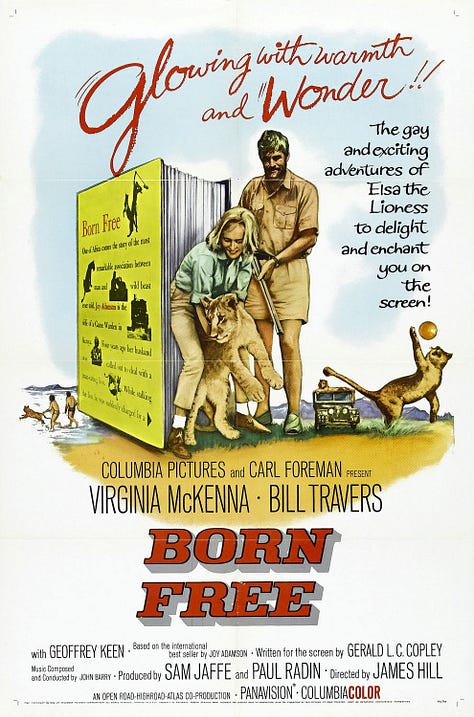
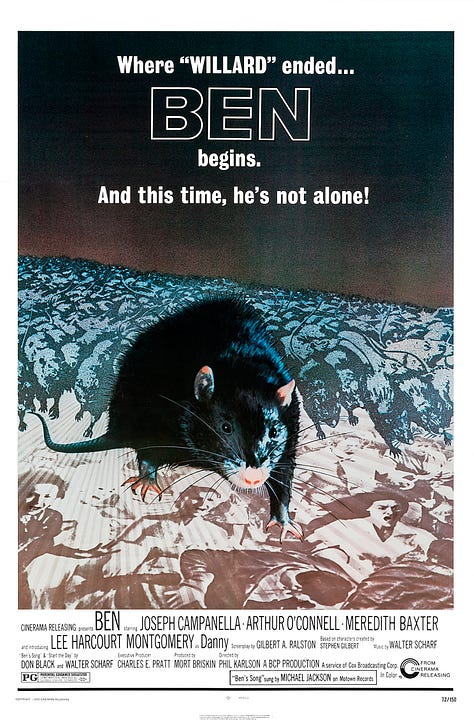
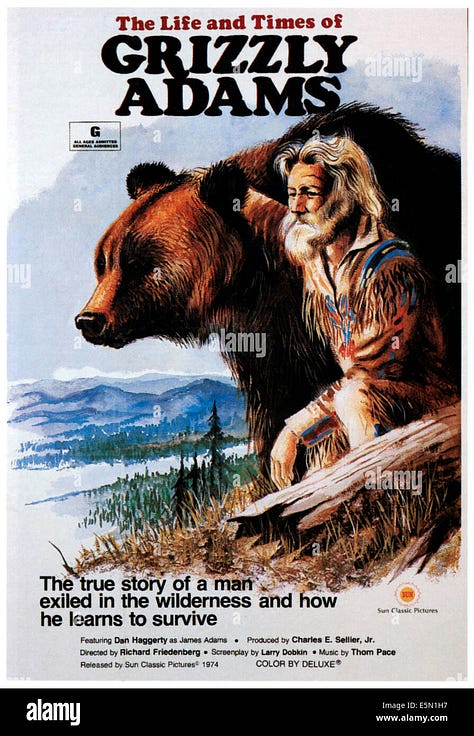
Who can forget B.J. and The Bear? (I guess a lot of people could forget this one). Greg Evigan stars as trucker Billie Joe "B.J." (We all joked about this growing up) McKay, a trucker who travels the country's highways with his pet chimpanzee, Bear. The backstory is that B.J. had been a prisoner of war in Vietnam when his helicopter went down. I guess Bear helps him cope with that trauma after he returns to America.
I’m sure there are more, but these four successful examples (B.J. and the Bear—not so much). They became staples of my childhood. But what is it about these books and shows that informed and entertained and had me rapt as a child? I realized they all shared a common denominator—all these examples are about connections and bonds between humans and wild animals. In almost all these cases and in the current memoirs on offer, it is the wild animal that reconnects the human to society, makes them understand the world in a new and very different light. The human is usually at a crossroads or depressed or dealing with loss. Until this animal comes along, that is, and the relationship between a human and a wild animal becomes “exhilarating and transformative.”
Catherine Raven’s 2021 memoir, Fox and I: An Uncommon Friendship, became an instant bestseller. Here’s how the book is described by the publisher:
Catherine Raven left home at fifteen, fleeing an abusive, disdainful father and an indifferent mother. More comfortable in nature than among people, she worked as a National Park ranger, eventually earning a PhD in biology. She built a house on an isolated plot of land in Montana, teaching remotely and leading field classes. One day, she realized that the mangy-looking fox who had been appearing on her property was now showing up every day at 4:15 p.m. She had never had a regular visitor before. How do you even talk to a fox? So, she brought out her camping chair, sat as close to him as she dared, and began reading to him from The Little Prince. Her scientific training had taught her not to anthropomorphize animals, but as she grew to know him, his personality revealed itself—and he became her friend. But friends cannot always save each other from the uncontained forces of nature. Fox and I is a tale of friendship, transformation, and coping with inevitable loss—and of how that loss can become meaningful.
Again, the animal becomes this fully realized character possessing it’s own characteristics with a personality and little quirks that intrigues the reader because it humanizes them. I don’t really see it as anthropomorphism; it falls short of this. The animals are always confined to the wild even though they may be living in someone’s kitchen or in a shoe box. The fox, in the case above, becomes the protagonist, and Catherine Raven documents and narrates. Like so many animal memoirs, these animals, like the fox or Elsie in Born Free or the grizzly and chimpanzee, all arrive unexpectedly in the writers’ lives and help them sort out their “stuff” on a path to self discovery.
There’s Elisabeth Tova Bailey’s, The Sound of a Wild Snail Eating. Bedridden and fighting a terrible illness, she is comforted by the snail on her plant by her bedside. As the New York Times article points out, “these memoirs share common threads. Often, authors are wrestling with grief, trauma or loss, and find solace in the company of an animal who isn’t forced to be their companion, and doesn’t pity or judge them.” It’s clear that many writers, and judging by their popularity—many readers, interacting and living with wild animals broadens their world.
H is for Hawk by Helen Macdonald is a record of a spiritual journey--an honest account of Macdonald's struggle with grief during the difficult process of the hawk's taming and her own untaming. Published in 2014 and a precursor to this most recent trend in publishing, it sold more than 500,000 copies in the USA alone. Then there’s Frieda Hughes who wrote, George: A Magpie Memoir in 2023. She reordered her life around the bird. The daughter of Ted Hughes and Sylvia Plath and her relationship to George changed her. Alfie and Me, Carl Safina’s memoir is about finding a baby screech owl and raising it.
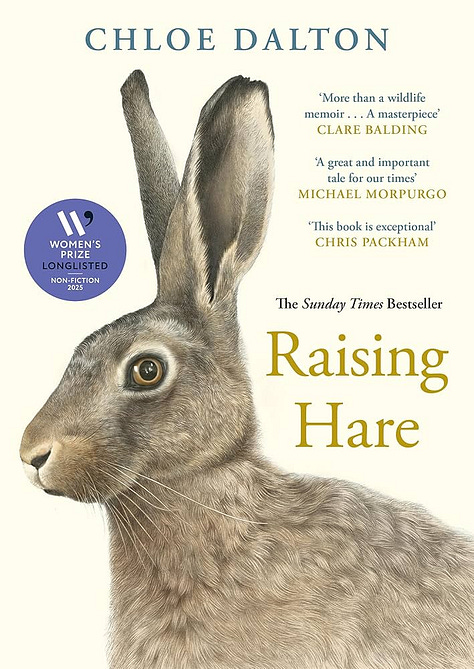
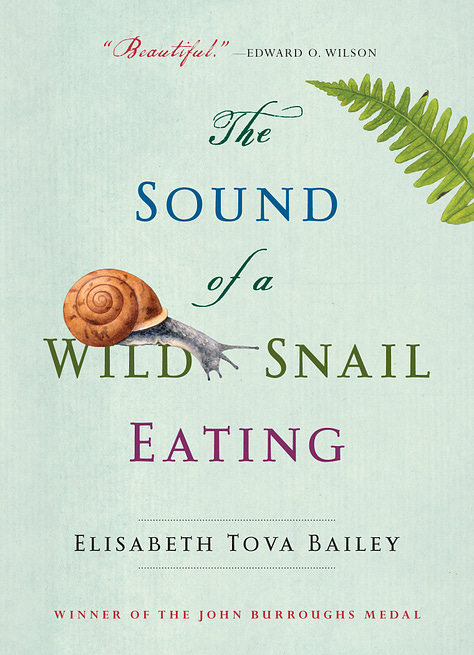
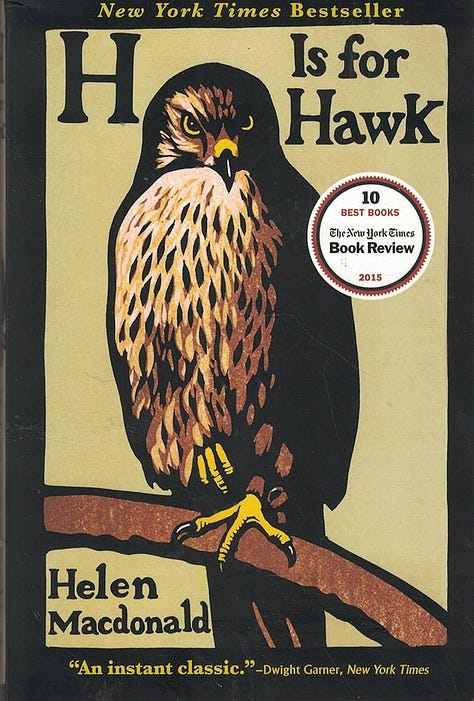
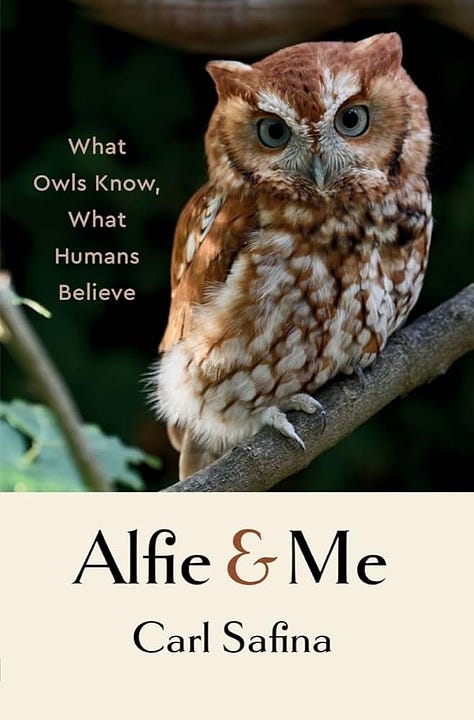
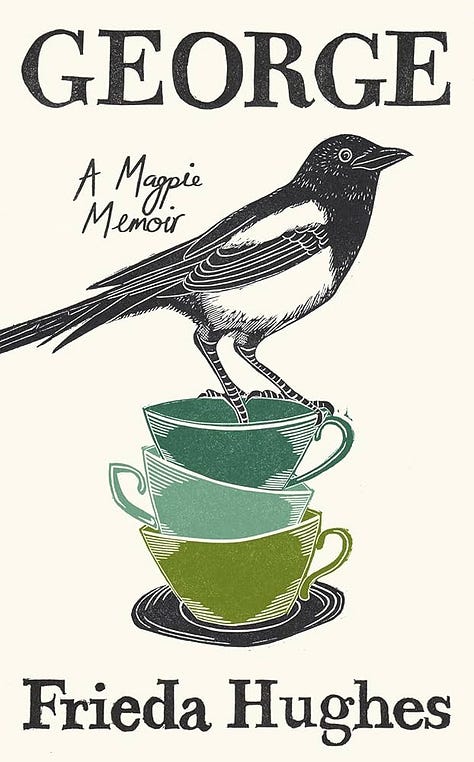

The latest addition to this trend that’s getting a lot of attention is Chloe Dalton’s, Raising Hare. It has shot up the best seller list. In it, Dalton details how she was struggling with isolation during the pandemic when her life took an unexpected turn after a chance encounter with a baby hare. She nurses it back to health, nurtures its growth until it is time to be released. It’s that fine line between getting close to a wild animal and knowing when it’s time to allow that creature to survive in it’s natural world. I remember watching My Octopus Teacher, a Netflix documentary that enjoyed staggering success. It follows a diver who develops a relationship with a curious young octopus. Beautifully filmed, it filled me with hope for all of us.
In all these examples, there are lessons to learn, or perhaps they are lessons we’ve forgotten, that comes from connecting to a wild animal. The common thread in all these movies and books is that in the often frenetic and difficult and challenging world we live in, it’s easy to lose oneself. These stories of collective longing, something I strongly feel we all crave, can teach us all something about the fragility of life and humanity's connection with nature. Perhaps this trend feeds our hunger. As a child it felt instinctive. I became connected when a lion cub walked through a doorway in Born Free. As an adult, I still need to feel, more than ever, that I have value in my connections with others. Funny thing is that in all these stories people are drawn to heal and look after these small creatures. The truth is . . . we are the one’s looking to be healed.


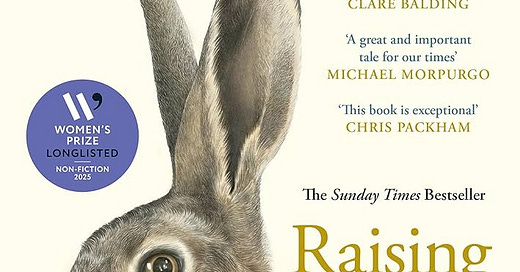



Thank you for this commentary Anthony. I remember the powerful impact the story of Christian the lion had on me. As humans we have a tendency to distance ourselves from the wild when we are truly a part of it. These stories remind us of our kinship.
Fascinating piece, Anthony. I loved H is for Hawk. I wonder if the trend can be partly explained by the ubiquity of our human relationships (good, bad, and indifferent) and the relative rarity of our relationships with wild animals. We like to read about things we’re less likely to experience or have never have experienced. Interesting post. Thank you.